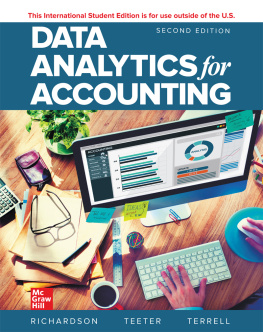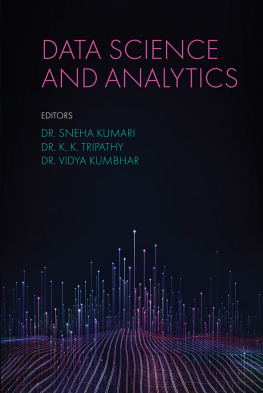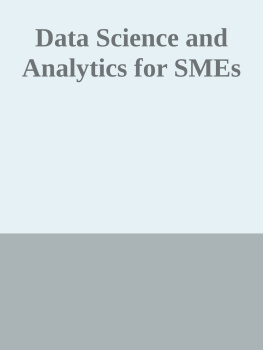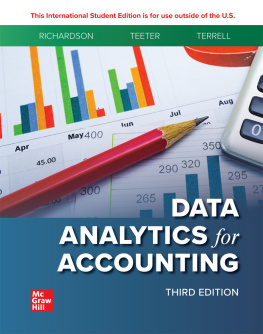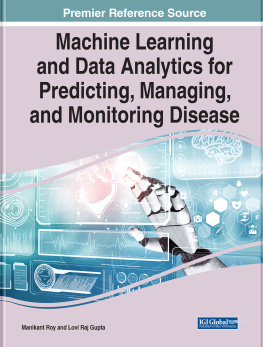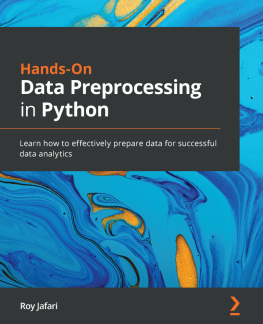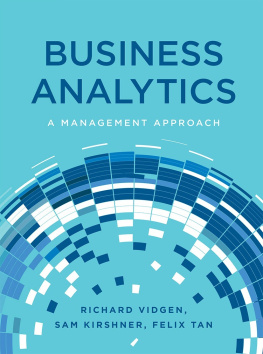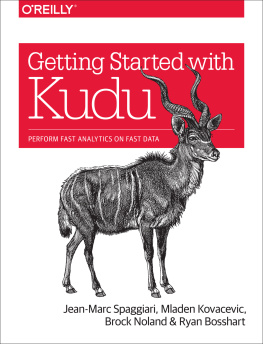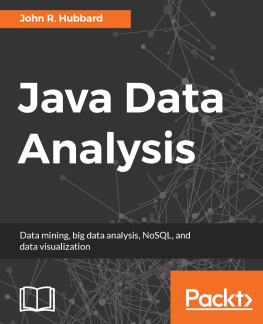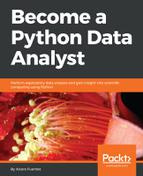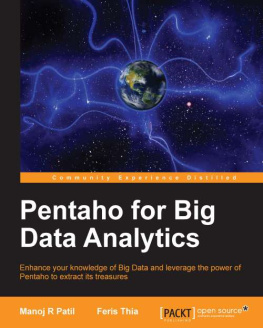page i
Data Analytics for Accounting
SECOND EDITION
Vernon J. Richardson |
University of Arkansas, Baruch College |
Ryan A. Teeter |
University of Pittsburgh |
Katie L. Terrell |
University of Arkansas |

page ii

DATA ANALYTICS FOR ACCOUNTING
Published by McGraw-Hill Education, 2 Penn Plaza, New York, NY 10121. Copyright 2021 by McGraw-Hill Education. All rights reserved. Printed in the United States of America. Previous editions 2019. No part of this publication may be reproduced or distributed in any form or by any means, or stored in a database or retrieval system, without the prior written consent of McGraw-Hill Education, including, but not limited to, in any network or other electronic storage or transmission, or broadcast for distance learning.
Some ancillaries, including electronic and print components, may not be available to customers outside the United States.
This book is printed on acid-free paper.
1 2 3 4 5 6 7 8 9 LWI 24 23 22 21 20
ISBN 978-1-260-57109-7
MHID 1-260-57109-2
Cover Image: Rawpixel.com/Shutterstock
All credits appearing on page or at the end of the book are considered to be an extension of the copyright page.
The Internet addresses listed in the text were accurate at the time of publication. The inclusion of a website does not indicate an endorsement by the authors or McGraw-Hill Education, and McGraw-Hill Education does not guarantee the accuracy of the information presented at these sites.
mheducation.com/highered
page iii
Dedications
My wonderful daughter, Melissa, for your constant love, encouragement and support.
Vern Richardson
My wife, Erin, and children, Sylvia and Theodore.
Ryan Teeter
To my co-author, friend, and colleague, Vernon Richardson. Thank you for inviting me to be on this textbook journey. And thank you for your guidance and patienceIm thrilled to be a part of your team!
Katie Terrell
page iv
Preface
Data Analytics is changing the business worlddata simply surrounds us! So much data is available to businesses about each of ushow we shop, what we read, what we buy, what music we listen to, where we travel, whom we trust, where we invest our time and money, etc. Accountants can create value by addressing fundamental business and accounting questions using data analytics.
All accountants must develop data analytic skills to address the needs of the profession in the future. Data Analytics for Accounting, 2e recognizes that accountants dont need to become data scientiststhey may never need to build a data repository or do the real hard-core Data Analytics or learn how to program a computer to do machine learning. However, there are seven skills that analytic-minded accountants must have to be prepared for a data-filled world, including:
An analytics mindsetrecognize when and how Data Analytics can address accounting questions.
Data scrubbing and data preparationcomprehend the process needed to extract (query), clean and prepare the data before analysis.
Data qualityrecognize what is meant by data quality, be it completeness, reliability, or validity.
Descriptive data analysisperform basic analysis to understand the quality of the underlying data and their ability to address the business question.
Data analysis through data manipulationdemonstrate ability to sort, rearrange, merge, and reconfigure data in a manner that allows enhanced analysis.
Problem solving through statistical data analysisidentify and implement an approach that will use statistical data analysis to draw conclusions and make recommendations on a timely basis.
Data visualization and data reportingreport results of analysis in an accessible way to each varied decision maker and his or her specific needs.
Consistent with these skills, its important to recognize that Data Analytics is a process. The process begins by identifying business questions that can be addressed with data, extracting and testing the data, refining our testing, and finally, communicating those findings to management. Data Analytics for Accounting, 2e describes this process by relying on an established data analytics model called the IMPACT cycle
Identify the question.
Master the data.
Perform test plan.
Address and refine results.
Communicate insights.
Track outcomes
page v
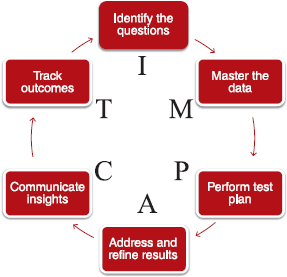
Adapted from Win with Advanced Business Analytics: Creating Business Value from Your Data, by Jean Paul Isson and Jesse S. Harriott.
The IMPACT cycle is described in the first four chapters and then the process is illustrated in audit, managerial accounting, financial accounting and tax in , adding an all-new tax chapter to Data Analytics for Accounting, 2e. In response to instructor feedback, Data Analytics for Accounting, 2e now also includes two new project chapters, giving students a chance to practice the full IMPACT model with multiple labs that build on each other.
Data Analytics for Accounting, 2e emphasizes hands-on practice. Students are provided with hands-on instruction (e.g., click-by-click instructions, screenshots, etc.) on datasets within the chapter; within the end-of-chapter materials; and in the labs at the end of each chapter. Throughout the text, students identify questions, extract and download data, perform testing, and then communicate the results of that testing.
The use of real-world data is highlighted by using data from LendingClub , College Scorecard , Dillards , the State of Oklahoma , as well as other data from our labs. In particular, we emphasize the rich data from Dillards sales transactions that we use in more than fifteen of the labs throughout the text (including ).
Data Analytics for Accounting, 2e also emphasizes the various data analysis tools students will use throughout the rest of their careerMicrosoft Excel, Microsoft Access (including SQL), Tableau (free student license), IDEA (free student license), and Weka (free student license). Using multiple tools allows students to learn which tool is best suited for the necessary data analysis, data visualization, and communication of the insights gainedfor example, which tool is easiest for internal controls testing, which is best for analysis or querying (using SQL) big datasets, which is best for data visualizations, and so on.
Jean Paul Isson and Jesse S. Harriott, Win with Advanced Business Analytics: Creating Business Value from Your Data (Hoboken, NJ: Wiley, 2013).
page vi
About the Authors

Vernon J. Richardson
Vernon J. Richardson is a Distinguished Professor of Accounting and the G. William Glezen Chair in the Sam M. Walton College of Business at the University of Arkansas and a Visiting Professor at Baruch College. He received his BS, Master of Accountancy, and MBA from Brigham Young University and a PhD in accounting from the University of Illinois at UrbanaChampaign. He has taught students at the University of Arkansas, Baruch College, University of Illinois, Brigham Young University, Aarhus University, and University of Kansas and internationally at the China Europe International Business School (Shanghai), Xian Jiaotong Liverpool University, and the University of Technology Sydney.
Next page
